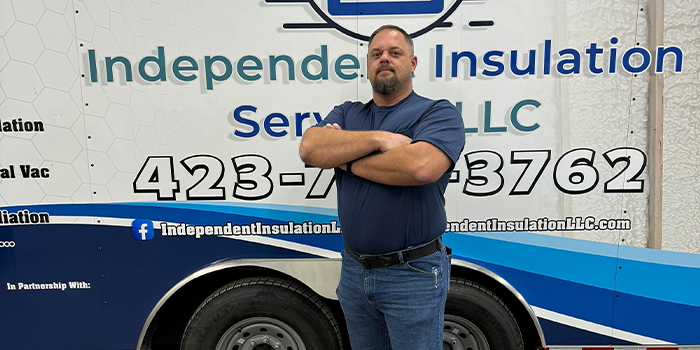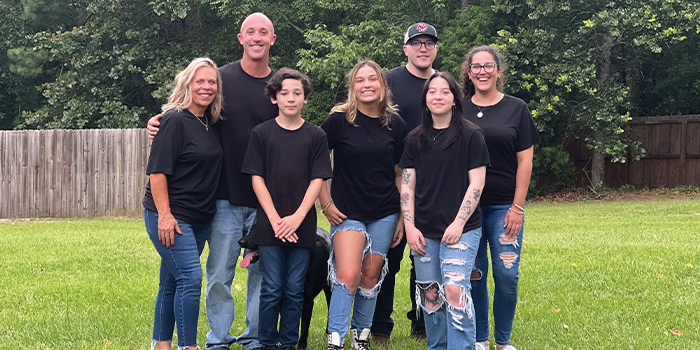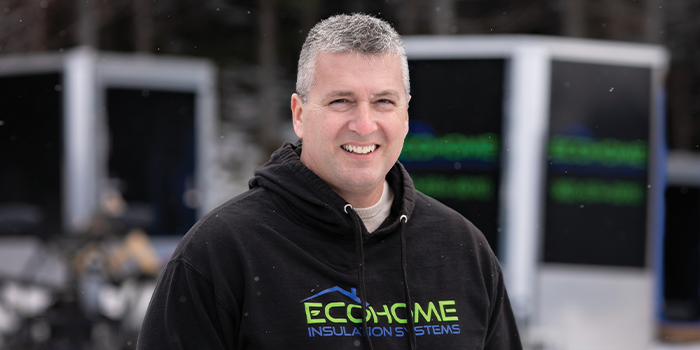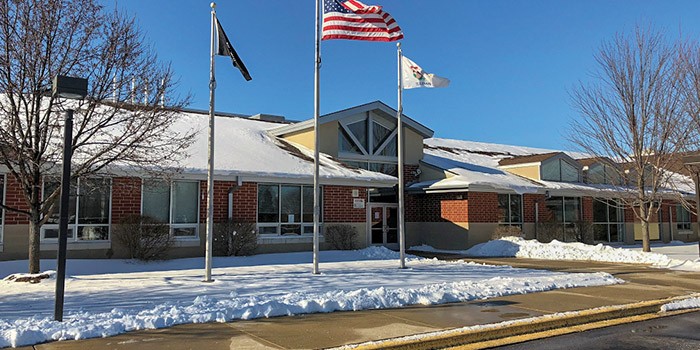
A-Plus Comfort

WINTHROP HARBOR, IL – May 3, 2018 – Does the performance of a building have a direct impact on a school and the learning that goes there? Well, yes, if the comfort of the students and faculty is compromised.
Ice dams, freezing pipes, premature roof failures… these are all signs of a building performing inefficiently due to air and moisture leakage. These were the precise symptoms that North Prairie Junior High School in Winthrop Harbor, Illinois gravely experienced for a number of years under the strain of severe cold weather and heavy snowfalls. This, of course, had a negative impact on the comfort of the students and teachers from cold air drafts during the frigid Midwestern season. To mitigate this, the energy consumption of the building was literally going through the roof.
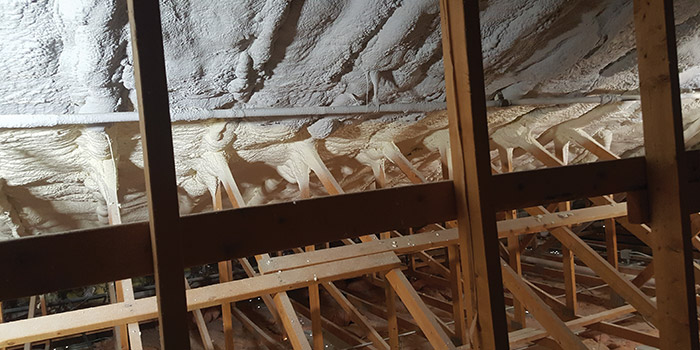
40,000 sq. ft. of fiberglass insulation was removed from the underside of the roof before spray foam was installed. The ABS crew installed FOAM-LOK 2000-4G with Honeywell’s Solstice LBA to the plywood substrate and fireproofed the foam with IFTI’s DC315.
The building was insulated with fiberglass batts in the hip roof areas between the roof trusses up against the plywood decking but had no air barrier. Warm moisture-laden air leaked around the insulation and caused the aforementioned issues. Because of this, damaged ceiling tiles from water intrusion had to be replaced to prevent potential mold growth, and unit heaters were running in the attic to prevent the pipes from freezing. In the flat roof areas, roof-wall joints also showed significant air leakage. The issues clearly revolved around the insulation in place and the lack of an air barrier on the building envelope, so when capital improvement funding from 2016-2018 was green-lit for schools in the Winthrop Harbor School District No. 1, which included the school in question, the school district placed high priority on a retrofit insulation project for North Prairie Junior High.
To inspect the damages of the air and water intrusion and evaluate the building performance issues, Air Barrier Solutions (ABS), a contracting company that specializes in fixing defects in building enclosures, was brought into the fold by the school district. ABS determined that a closed-cell spray polyurethane foam insulation application was the best solution for an air and watertight building seal that would eliminate these problems for good.
“The building was suffering from having interior and exterior air freely moves through vented soffits and ridges,” explains Larry Harmon, owner of ABS. “Without an air barrier, this was basically vented insulation—not good in a cold climate for a building that’s close to Lake Michigan. In a northern climate, you need an air barrier aligned with a thermal barrier inside of the heated envelope. Following heavy snowfalls, there were numerous ice dams caused by the air leakage. Then there’s moisture drive to consider, and the fact that the roof deck needed strengthening after the damage that had built up over the years. With closed-cell foam, we get an air and vapor barrier, we strengthen the roof, and we provide high performance for the entire building for about the same cost that it would take to reshingle the roof. I can’t think of any other type of insulation that could do that.”
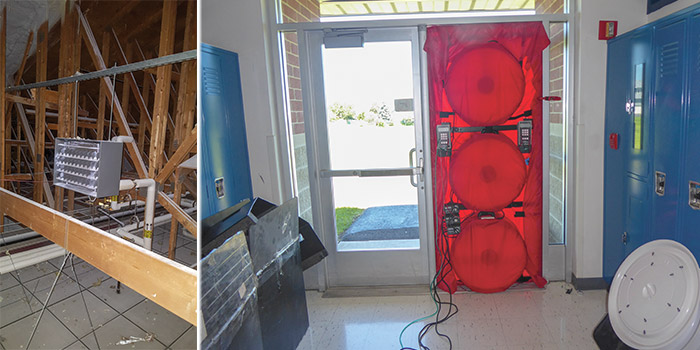
Because of the air leakage, the school had placed unit heaters in the attic to prevent pipes from freezing; Blower door tests were conducted before and after the spray foam application. The post-retrofit tests revealed amazing results;
The project consisted of removing approximately 36,480 square feet of fiberglass batts from the hip and replacing it with closed-cell spray polyurethane foam insulation coupled with a fire-protective intumescent coating acting as a thermal barrier. Additionally, ABS conducted two blower door tests: One before the application and one after. But more on that later.
It would take a total of a month-and-a-half to complete the removal of the fiberglass and the spray foam install, so the project was purposely carried out during the summertime when school was not in session so the crew could work swiftly with minimal foot traffic.
Stripping the foil-faced fiberglass in the middle of the summer was as challenging as it was grueling. Harmon notes that he had six crew members suited up in Tyvek jumpsuits, steel-toed boots, fresh air respirators, and gloves every day for two straight weeks hand removing the insulation. Half of the ABS crew utilized tension lifelines attached to safety harnesses to walk along beyond the drop ceiling and remove the fiberglass from the trussed hip roof right down to the plywood substrate. The crew made a 4 x 4 hole on a strategic location in the drop ceiling to funnel the fiberglass batts through for the other crew members to bag the waste, put in a cart, and take it out of the building.
Prior to the application, the ABS crew prepped the area by covering the sprinklers, ceiling fixtures, and smoke detectors while setting up as many as eight exhaust fans to make sure the area was properly ventilated at all times. They also covered the floors and appliances around the areas beneath the drop ceiling for added protection from overspray damage.
For the spray foam application, ABS utilized Icynene-Lapolla’s Foam-Lok™ 2000 4G with Honeywell Solstice® Liquid Blowing Agent, which is based on next-generation hydrofluoro-olefin (HFO) technology and contains an ultra-global warming potential of 1. Harmon notes that a determining factor for selecting this particular product was the use of Solstice LBA because it was environmentally preferred.
“We work closely with Spray Foam Distributors of New England and were familiar with the 4G system formulated with Solstice LBA,” says Harmon in a case study. “We select products like Solstice because we are an environmentally proactive firm. The project was technically complex and the resulting airtightness was the result of using closed-cell spray foam.”
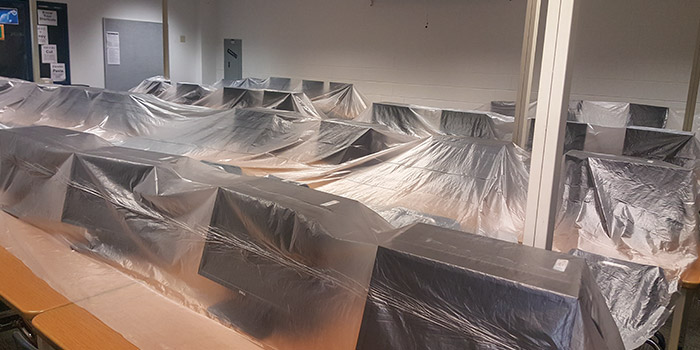
Even though there was a drop ceiling in between the work area and the rest of the building, the crew masked off all areas below for overspray damage protection.
Equipped with a truck-mounted Graco E-30i proportioner, 310 feet of hose, and a Graco Fusion CS spray gun, and while wearing the same PPE they donned during the fiberglass stripping portion of the project, the ABS crew installed four inches of the next-generation foam to the underside of the school’s roof deck down to the wall plate. The crew spray-applied a total of 36 sets of foam.
“We are very pleased that Solstice LBA was a key factor in the school’s decision to select this spray foam system,” said Laura Reinhard, Honeywell’s global business manager for spray foam, in a case study. “It provides both performance and environmental benefits. More and more formulators are converting from HFC blowing agents to our HFO-based technology.”
After the foam application, the ABS crew applied over the foam 18 WFT mils of DC315, a fire-protective intumescent coating made by International Fireproof Technology (IFTI). The application of DC315 acted as the thermal barrier over the air barrier.
Harmon notes that the application effectively blocked off the previous roof deck venting, sealed off the roof-wall joints, strengthened the roof decking, and eliminated the risk of freezing pipes. The post-retrofit blower door test showed a remarkable 69 percent improvement in airtightness from the test that was conducted prior to the spray foam application. It looks like spray foam passed the test, pun intended.
“It’s a win-win installation,” says Harmon. “The life of the roof has been extended, the infiltration of air and water has been reduced by almost 70 percent and that’s going to have a positive impact on energy savings – they can disable all those unit heaters in the attic! And, lastly, they finally have fully functional R-value in the roof of the building. It was a great job to be a part of, I’m really proud of it.”
Grayson Gilbert, HR manager at Winthrop Harbor School District No. 1, was satisfied with the retrofit application and optimistic about what it might bring about for the future.
“We are confident the spray foam insulation will improve the comfort of our students and faculty, as well as significantly reduce our utility costs,” said Gilbert in a case study. “I can’t wait to see our energy efficiency improvements and would definitely recommend the use of this system for future projects.”
Spray foam earned the building an A-plus for performance, and now the 260 students at North Prairie Junior High School will not be able to use lack of indoor comfort as an excuse for not getting high marks!
» For more information, please visit www.honeywell-solsticelba.com and www.airbarriersolutions.com.



